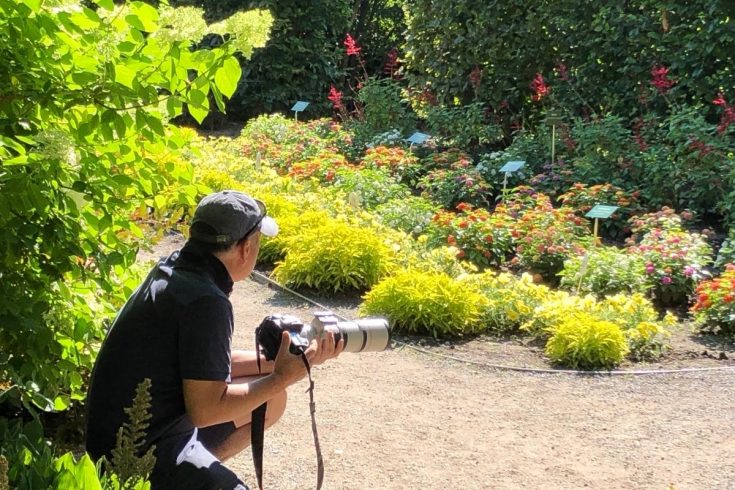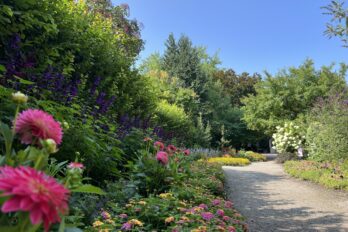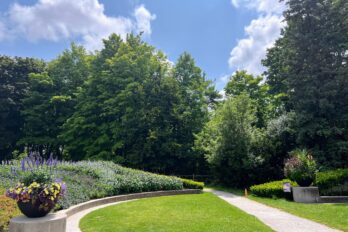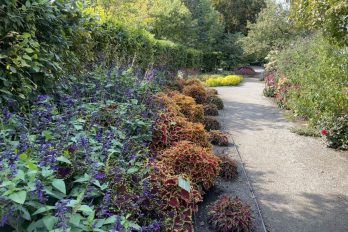By Veronica Sliva
August 2021 – When I visited the Trial Gardens last week photographers were lining the path in front of the ‘Purple and Bloom’ Salvias and then further on in front of the ‘Roman Red’ Salvias. Though the salvias are looking fabulous right now, it is because they attract hummingbirds that visiting photographers to the TBG are on high alert. Every photographer I talked to was looking for that perfect shot of the bloom and the bird…together.
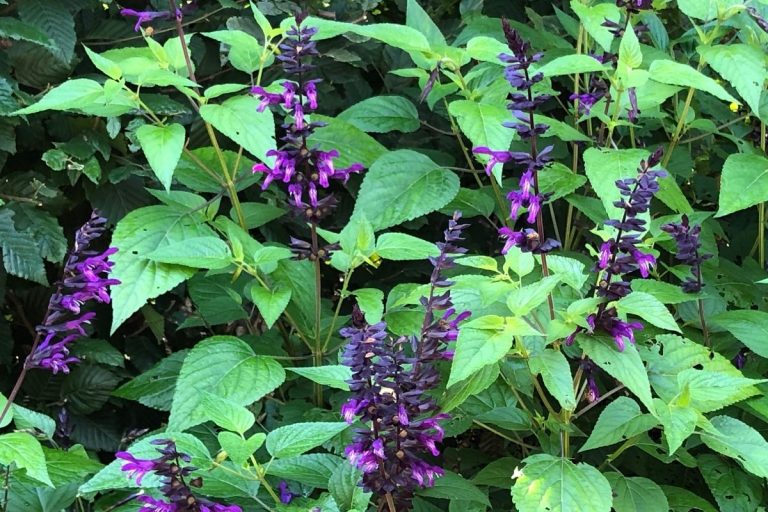
With their long, slender beaks, hummingbirds can feed on any tubular-shaped flower, but their relationship with salvias is especially interesting. The stamens of the salvia are held in a hood-like structure in the corolla. When a hummingbird’s beak enters the narrow tubular bloom it triggers a mechanism in the throat of the flower (similar to pushing a lever), that brushes the stamens against its head. The hummingbird ends up wearing a crown of pollen as it moves onto the next flower to seek more nectar. When it enters the next flower this pollen is deposited in just the right place, thus ensuring the process of pollination continues.
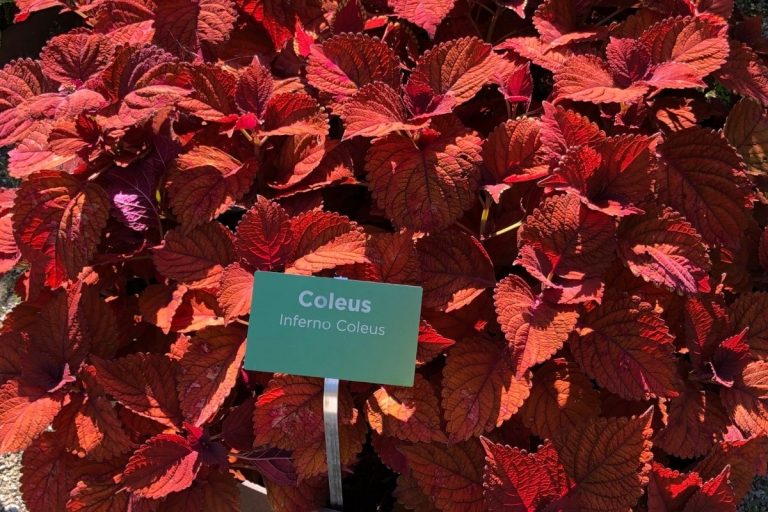
Coleus Comes Through
With all the rain we had in July I wondered if the coleus could stand up to soggy soil. I shouldn’t have worried. Located in what was the vegetable garden in previous years, some varieties (in the larger rings) are tall and robust, others (in the similar but smaller rings) are more dainty and are perfect for smaller gardens. You can get up close and see how one variety compares to another. Though the area is one of the shadiest the garden, the coleus varieties here are displaying positively electric colours that brighten up the entire garden.
Calibrachoa…Not So Much
Back in mid-July the calibrachoa was looking terrific. It was starting to create a beautiful mosaic-like carpet in the raised beds and I was very impressed. But on this visit, it was looking very scraggly and some of the foliage was dying back. What happened?
I asked Dean Ruhnke, a professional gardener with the TBG, what was going on. He said, “There is a major Ph problem in that bed. It was spotted by me and some garden volunteers about three to four weeks ago. We have been addressing it by adjusting the Ph back to the range in which the nutrients are in a form that is “uptakeable” by the plants. Once the Ph is at the correct range, you can begin fertilizing again. If the Ph is not addressed, the fertilizer will not be available to the plants and will leach away into the environment; always do a soil test. They are showing signs of bouncing back.”
[yotuwp type=”videos” id=”uV9ybX1HWGQ” ]Take a Virtual Tour of the Trial Gardens with Tanya Carvalho
Take a walk with Tanya Carvalho, Territory Manager of Canada at Ball FloraPlant / Selecta One on Youtube as she tours the trial gardens and reports on their progress.

